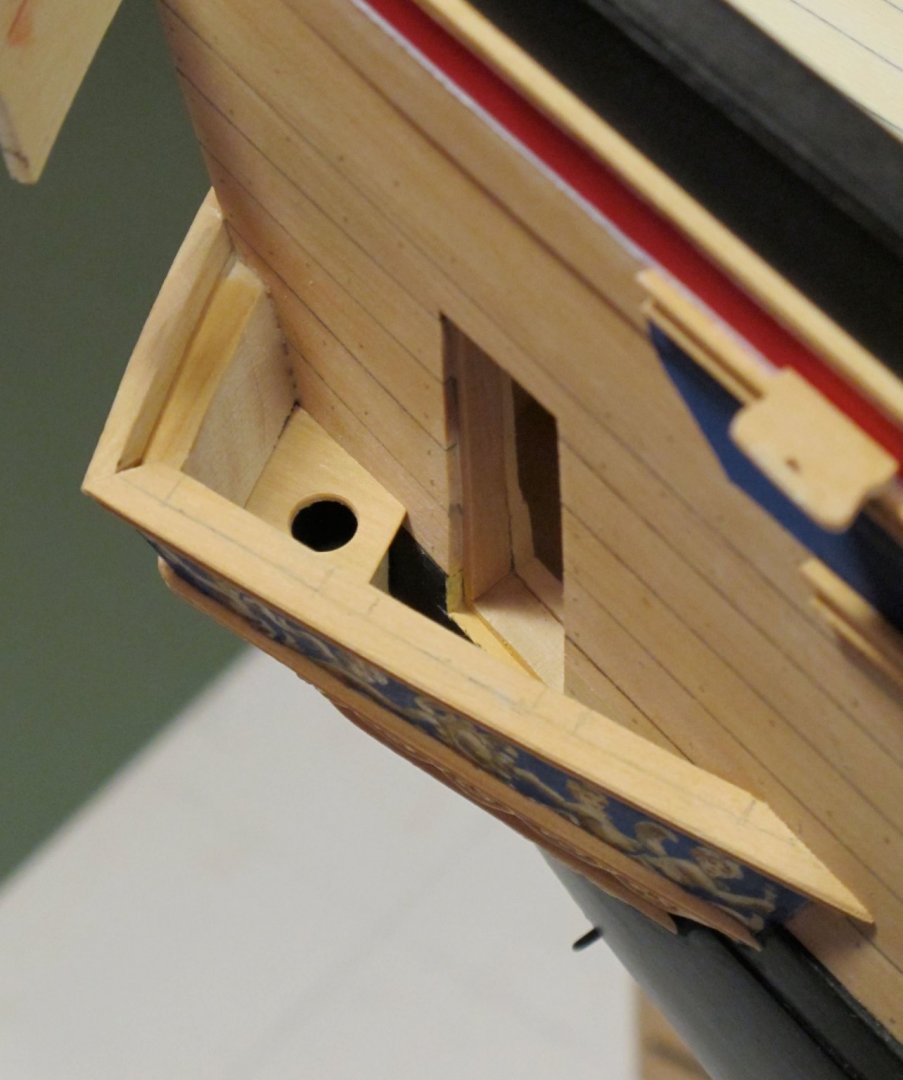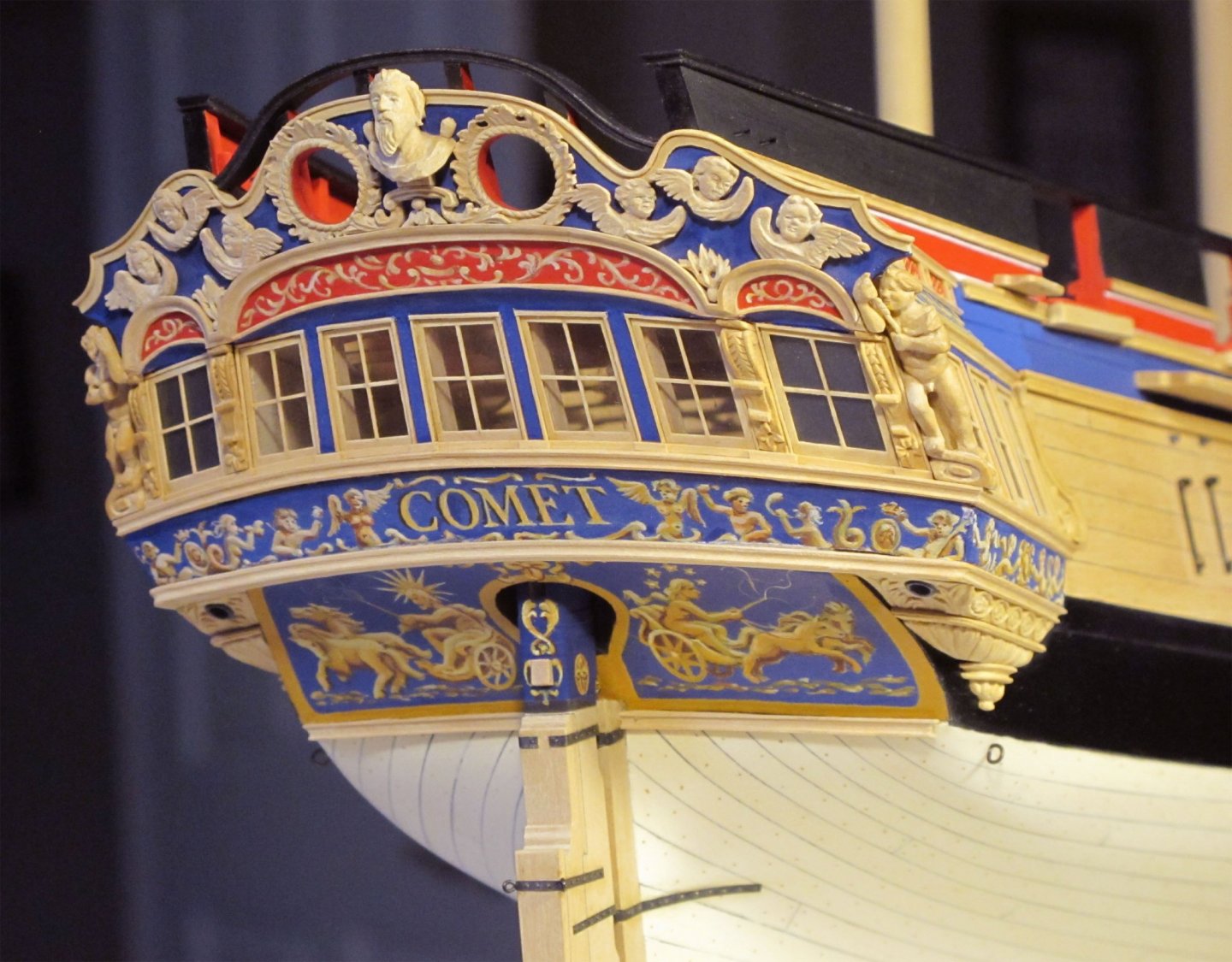-
Posts
13,361 -
Joined
-
Last visited
Content Type
Profiles
Forums
Gallery
Events
Everything posted by druxey
-
Ayieee! Those tops are small! It's interesting how you need to make things up as you go along to get around structural obstructions. What, I wonder, are you saying to your younger self?
- 740 replies
-
- Tudor
- restoration
-
(and 4 more)
Tagged with:
-

FREE JOURNAL OFFER - COVID 19 COPING
druxey replied to kurtvd19's topic in NAUTICAL RESEARCH GUILD - News & Information
Nice gesture, NRG! -
The quarter gallery lights are parallel top and bottom as well as the sides which are also parallel. Any inequality is taken up at the forward end and hidden under the canting livre. Yes, there are books that describe all this! Hint: the curve of the lower and upper sills are identical, simply the upper one is shifted in and aft by the rake of the gallery.
-
Ah! The French disease as called by the British or the English disease when spoken of by the French. Reminds me of how Covid has been referred to.... Must get some Botanical Syrup, if it's not all sold out. Sounds like good stuff.
-
Harrowing story! Interesting that the first thought was "Get the wine!"
-
Please take care of yourself. I wish you an uncomplicated recovery. Love the progress you are making.
- 2,699 replies
-
- heller
- soleil royal
-
(and 9 more)
Tagged with:
-
I think you should be OK after the first casting or two, when things have warmed up. Don't pour too slowly - be intentional! Certainly talc will help flow.
-
And, of course, the excess metal is completely recyclable for the next casting....
-
Catching up with your progress, Maury. Coming along nicely. Glad you decided to modify the metalwork.
-
In addition, make the filling vent area larger: the weight of the head of metal will help ensure good filling of the mold.
-
Item: the moulding along the knuckle of the junctions of the counters should be 1" below the lower counter plank as a drip edge. You can see this feature on contemporary models if you squat down! Your illustration is above incorrect. Also, the upper surfaces of the mouldings are parallel to the sheer, not the decks. If this is not the case, you will end up with an ugly joint at the corners with the quarter galleries!
-
Much nicer belaying pins! I do hope you paint them to look like wood, though.
- 87 replies
-
- royal caroline
- yacht
-
(and 1 more)
Tagged with:
-
Unusual cutaway! I've run out of superlatives....
- 589 replies
-
- le gros ventre
- cargo
-
(and 1 more)
Tagged with:
About us
Modelshipworld - Advancing Ship Modeling through Research
SSL Secured
Your security is important for us so this Website is SSL-Secured
NRG Mailing Address
Nautical Research Guild
237 South Lincoln Street
Westmont IL, 60559-1917
Model Ship World ® and the MSW logo are Registered Trademarks, and belong to the Nautical Research Guild (United States Patent and Trademark Office: No. 6,929,264 & No. 6,929,274, registered Dec. 20, 2022)
Helpful Links
About the NRG
If you enjoy building ship models that are historically accurate as well as beautiful, then The Nautical Research Guild (NRG) is just right for you.
The Guild is a non-profit educational organization whose mission is to “Advance Ship Modeling Through Research”. We provide support to our members in their efforts to raise the quality of their model ships.
The Nautical Research Guild has published our world-renowned quarterly magazine, The Nautical Research Journal, since 1955. The pages of the Journal are full of articles by accomplished ship modelers who show you how they create those exquisite details on their models, and by maritime historians who show you the correct details to build. The Journal is available in both print and digital editions. Go to the NRG web site (www.thenrg.org) to download a complimentary digital copy of the Journal. The NRG also publishes plan sets, books and compilations of back issues of the Journal and the former Ships in Scale and Model Ship Builder magazines.




